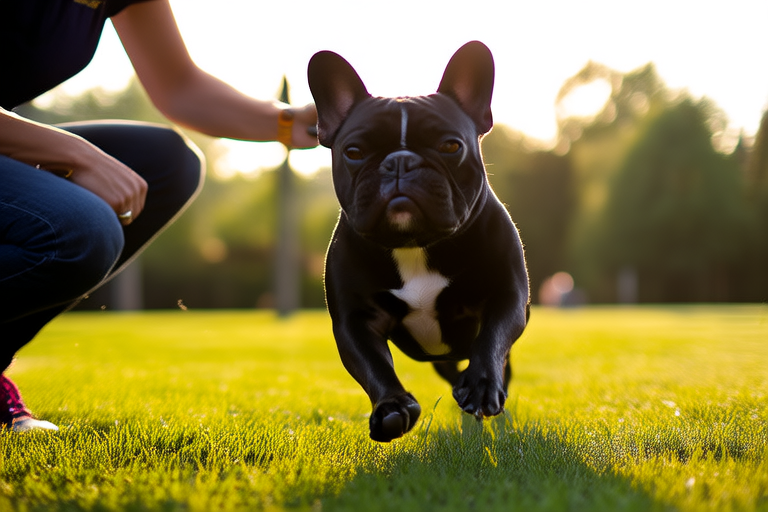From Couch Potato to Fitness Frenchie: Training Tips for Your Pup
Welcome to the wonderful world of canine fitness! Transforming your couch potato into a fitness enthusiast can be an exciting and rewarding journey. This guide will help you understand your dog’s fitness level, set realistic goals, choose appropriate exercises, create a training schedule, incorporate mental stimulation, and ensure proper nutrition supports the fitness journey.
Understanding Your Dog’s Fitness Level
The first step in your dog’s fitness journey is assessing their current fitness level. Consider factors such as age, breed, weight, and overall health. Consult with your veterinarian to determine if your dog has any underlying health conditions that may affect their exercise regimen. Pay attention to your dog’s breathing, energy levels, and ability to perform simple tasks like walking or playing fetch.
Setting Realistic Goals
Setting realistic goals is crucial for both you and your dog. Start by identifying what you hope to achieve through regular exercise. Do you want to increase your dog’s energy levels, improve their cardiovascular health, or simply provide more bonding time? Set achievable targets based on your dog’s fitness level and lifestyle. Remember, every small improvement counts!
Choosing Appropriate Exercises
Select exercises that suit your dog’s breed, age, and physical condition. For example, swimming is ideal for dogs with joint issues, while running might be better suited for younger, healthier breeds. Incorporate a variety of activities, such as walking, hiking, playing fetch, and agility training, to keep your dog engaged and prevent boredom. Always supervise your dog during exercise and ensure they have access to water and shade.
Creating a Training Schedule
A consistent training schedule is key to your dog’s success. Establish a routine that fits your lifestyle and your dog’s needs. Begin with short, frequent sessions and gradually increase the duration and intensity of the exercises. Consistency is vital; aim to exercise your dog at least three times a week, ideally daily. Incorporate rest days to allow your dog’s muscles and joints to recover.
Incorporating Mental Stimulation
Mental stimulation is just as important as physical activity. Engage your dog’s mind with puzzle toys, training sessions, and interactive games. These activities can help reduce stress and anxiety, improve focus, and strengthen the bond between you and your dog. Rotate toys and games to keep things interesting and challenging for your dog.
Ensuring Proper Nutrition Supports the Fitness Journey
Nutrition plays a critical role in your dog’s fitness journey. Consult with your veterinarian to determine the appropriate diet for your dog based on their age, weight, and activity level. High-quality dog food provides essential nutrients that support muscle growth, joint health, and overall well-being. Avoid overfeeding, as excess weight can lead to health problems. Consider incorporating healthy snacks and treats that align with your dog’s dietary needs.
Practical Tips and Advice
Here are some practical tips to help you along the way:
- Start Slow: Gradually introduce new exercises and increase the intensity to avoid overwhelming your dog.
- Stay Positive: Use positive reinforcement techniques, such as praise and treats, to encourage good behavior and build confidence.
- Be Patient: Every dog learns and adapts at their own pace. Celebrate small victories and remain patient throughout the process.
- Listen to Your Dog: Pay attention to your dog’s body language and signs of fatigue or discomfort. Adjust the exercise accordingly.
Overcoming Common Challenges
Transforming a sedentary dog into an active one may come with its challenges. Here are some common obstacles and how to overcome them:
- Lack of Motivation: If your dog lacks motivation, try introducing new activities or changing the environment. Dogs often enjoy exploring new places and meeting new people.
- Joint Pain: If your dog experiences joint pain, consult with your veterinarian about appropriate low-impact exercises and supplements that promote joint health.
- Weather Conditions: Bad weather can hinder outdoor activities. Consider indoor alternatives, such as treadmill walks or agility courses.
Gradual Progression and Consistency
Gradual progression and consistency are essential for your dog’s fitness journey. Introduce new exercises slowly and monitor your dog’s progress. Be patient and persistent, and remember that every step forward is a victory. Consistency in training and exercise will help your dog develop good habits and maintain their fitness level.
Conclusion
From Couch Potato to Fitness Frenchie: Training Tips for Your Pup is your ultimate guide to transforming your dog from a sedentary companion into an active and healthy member of your family. By understanding your dog’s fitness level, setting realistic goals, choosing appropriate exercises, creating a training schedule, incorporating mental stimulation, and ensuring proper nutrition, you can embark on this rewarding journey together. Remember, the key to success lies in gradual progression and consistency. With patience, dedication, and love, you’ll watch your dog thrive and enjoy a happier, healthier life.
